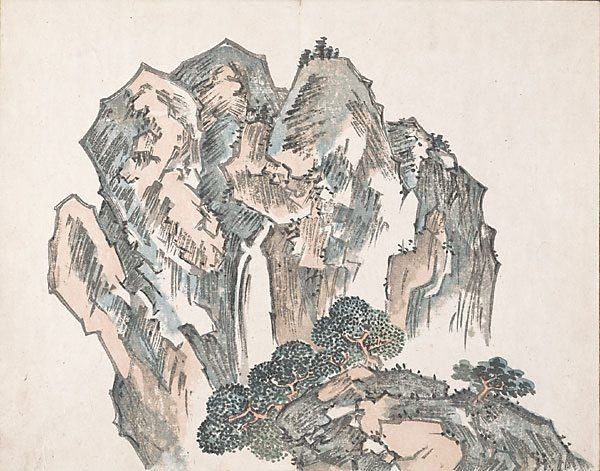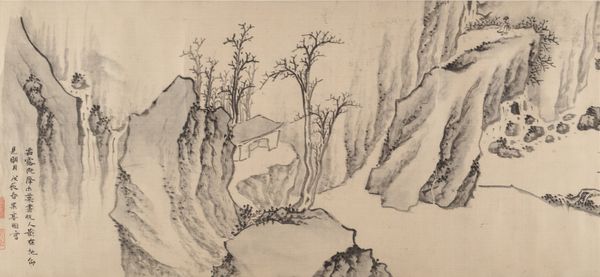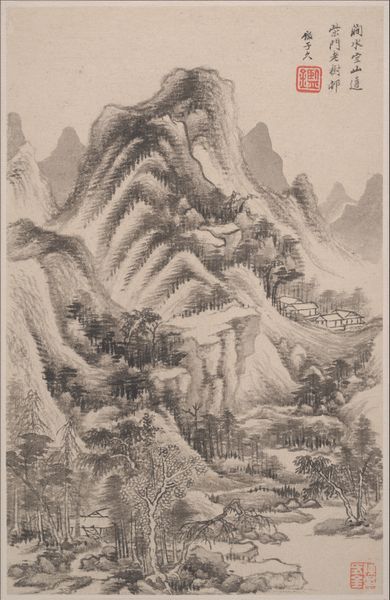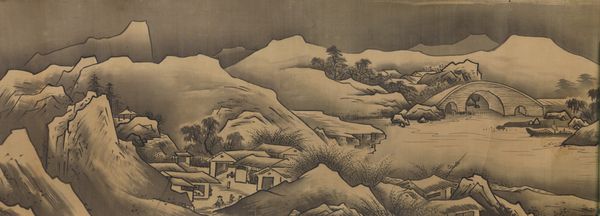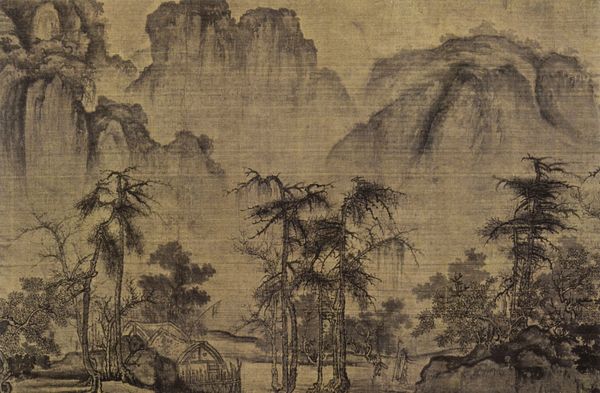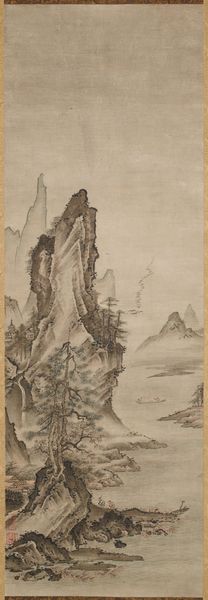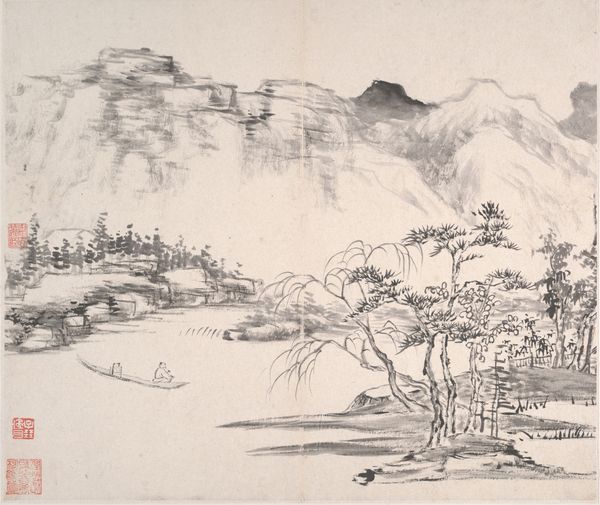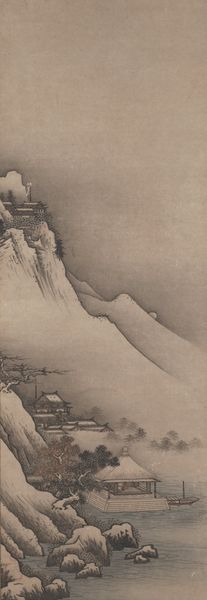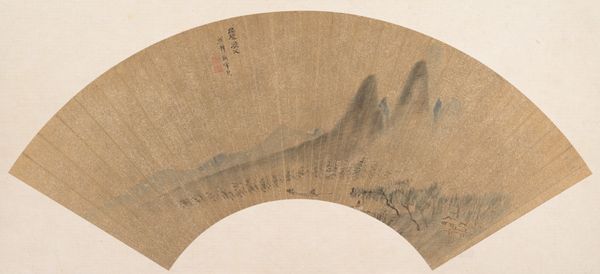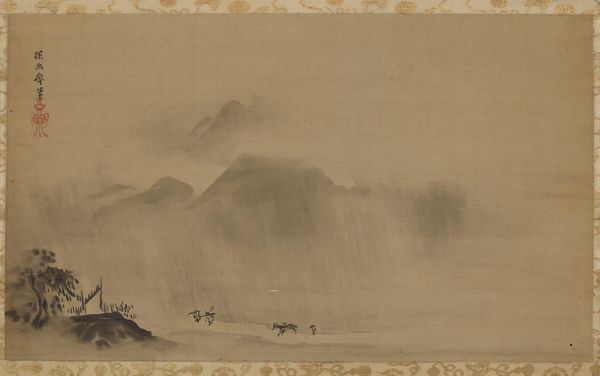
painting, hanging-scroll, ink
#
painting
#
asian-art
#
landscape
#
japan
#
hanging-scroll
#
ink
#
orientalism
Dimensions: 42 7/8 × 14 11/16 in. (108.9 × 37.31 cm) (image)76 15/16 × 19 7/8 in. (195.42 × 50.48 cm) (mount, without roller)
Copyright: Public Domain
Curator: This is Unkoku Todeki’s “Landscape of Summer and Autumn,” an ink on paper hanging scroll, dating from the 1620s. Editor: Well, the first thing that strikes me is this dreamy, ethereal quality. It’s like looking at a memory of a landscape, soft and slightly melancholic. Curator: It reflects the principles of Japanese landscape painting, particularly the integration of humanity within the grandeur of nature, evoking a sense of harmony, right? It also seems important to address that the artistic persona, the brush name Unkoku, alludes to belonging, tracing origins and lineage through affiliation with Sesshū. Editor: Exactly! I'm seeing how people fit so small here: a little boat bobbing on the water, little figures in the lower corner... There's such an emphasis on the vastness, the immensity of it all. It also reminds me of how small I feel when walking my dog up to Inspiration Point every Sunday morning... that perspective, right? Curator: And it's crucial to view this landscape within its cultural context: Zen Buddhism. The painting emphasizes tranquility, balance, and the beauty of impermanence. Nature has historically not only served as setting but also as historical actor within this narrative. Do you find the monochrome contributes to this reading? Editor: Definitely. The subtlety allows me to get lost in it and the interplay of light and shadow is like a dance; they guide you across the scenery... It seems deeply personal, this engagement between brush and ink. Sort of like a quiet meditation turned visible. You know? What really stayed with me, thinking about it all, is that Todeki captured the soul of nature... Curator: Absolutely! Highlighting Todeki's philosophical engagement and the relationship between aesthetics, spirituality, and place are important when contextualizing the artwork's influence within and outside of Zen practices.
Comments
minneapolisinstituteofart about 2 years ago
⋮
At the center of this triptych of hanging scrolls is a portrait of Bodhidharma, known as Daruma in Japan, the Indian patriarch of Zen Buddhism credited with transmitting Zen from India to China in ancient times. At right and left are images of China—dramatic mountainscapes with Buddhist temples and gnarled old pine trees perched on the peaks, along with motifs representing all four seasons. The bold contour lines, solid shape of the mountains, and shallow representation of space are characteristic of Unkoku Tōeki, whose style was informed by the paintings of the revered medieval painter Sesshū Tōyō (1420–1520).
Join the conversation
Join millions of artists and users on Artera today and experience the ultimate creative platform.
